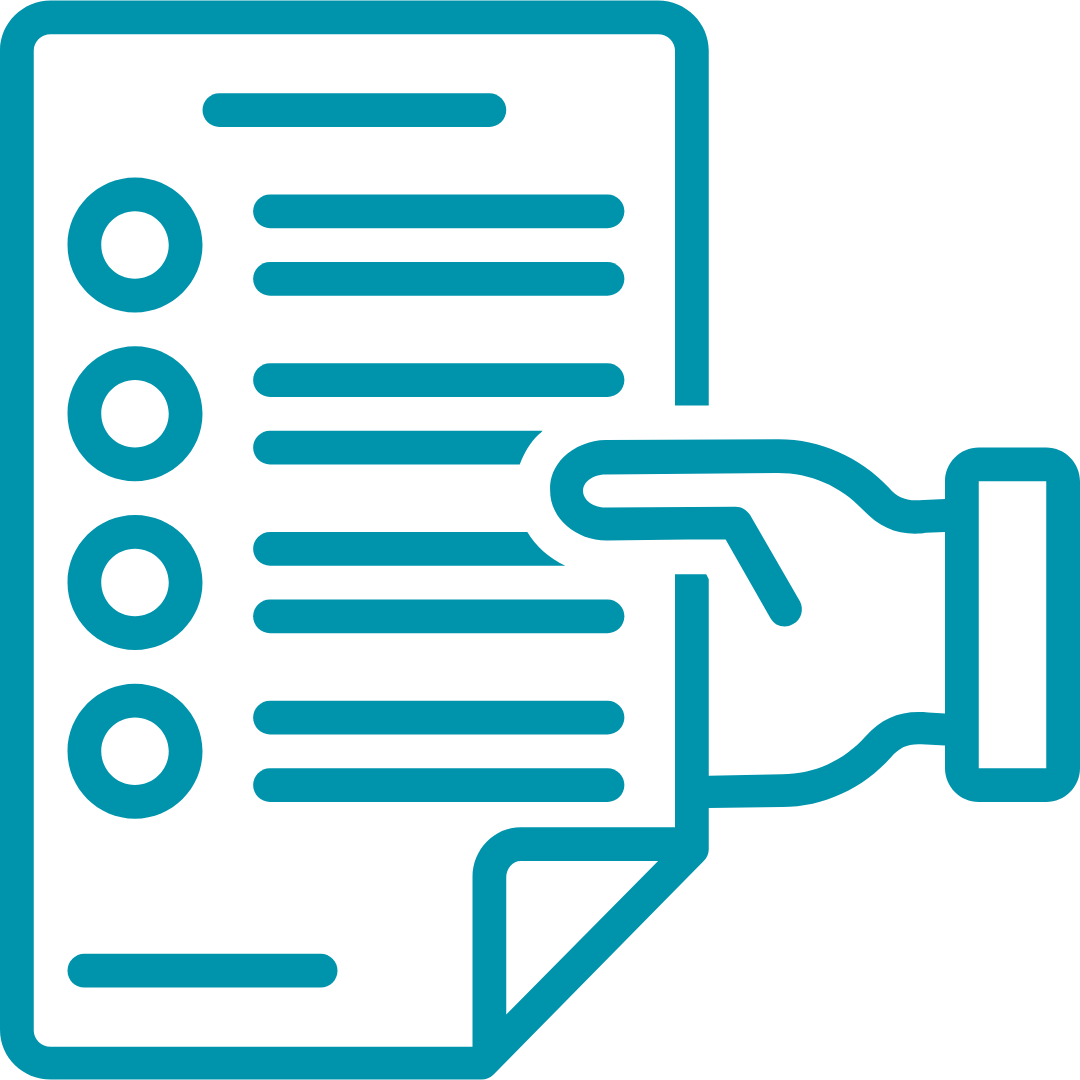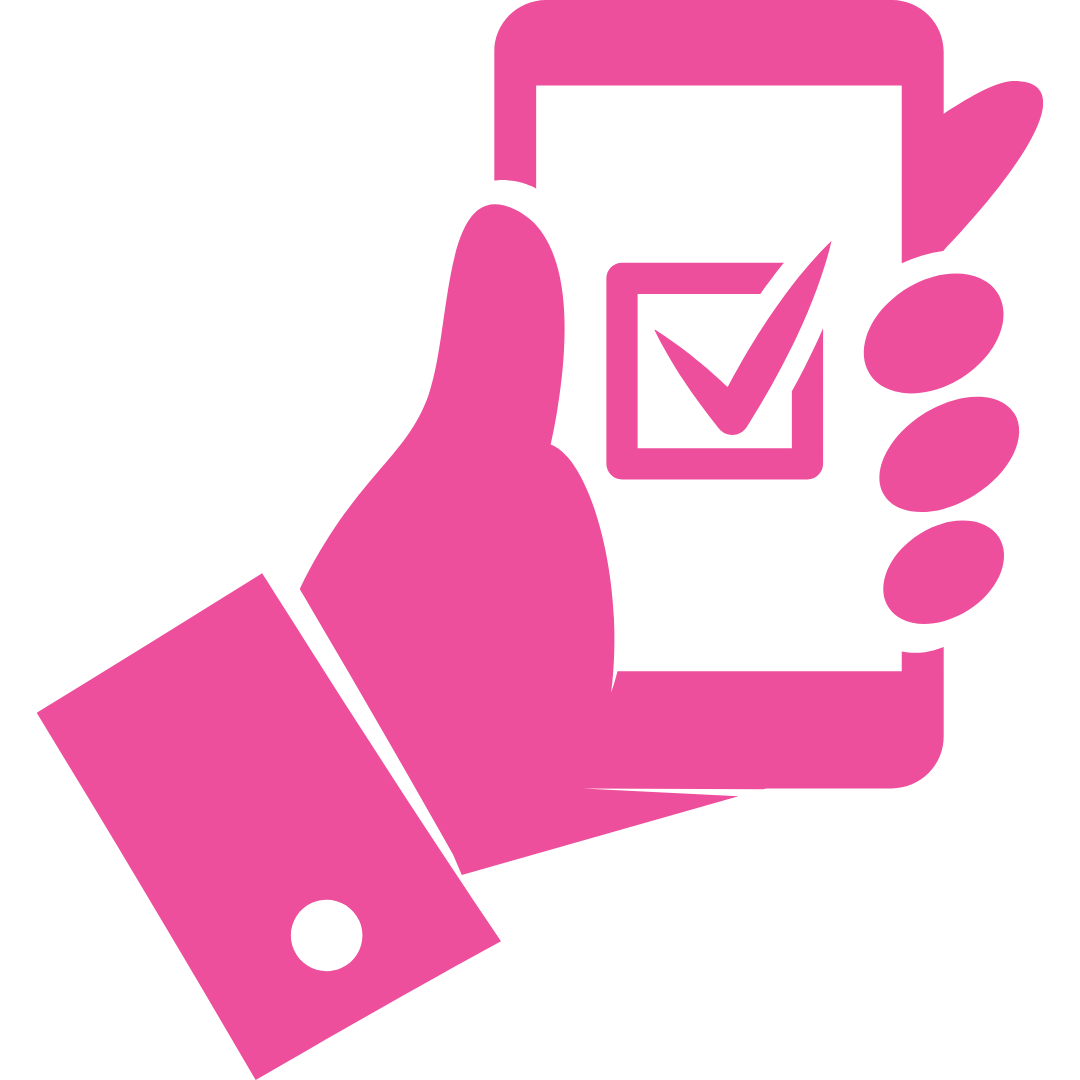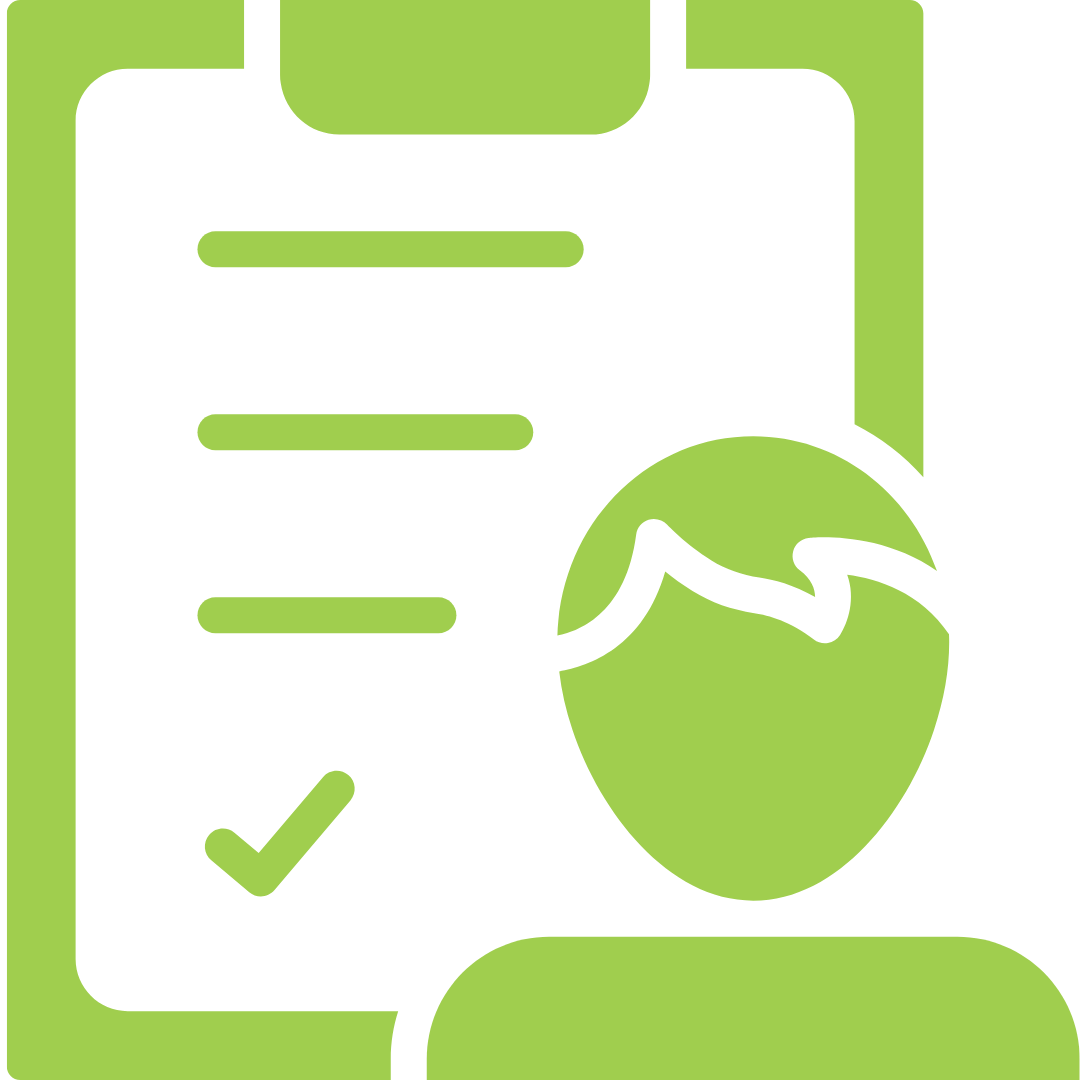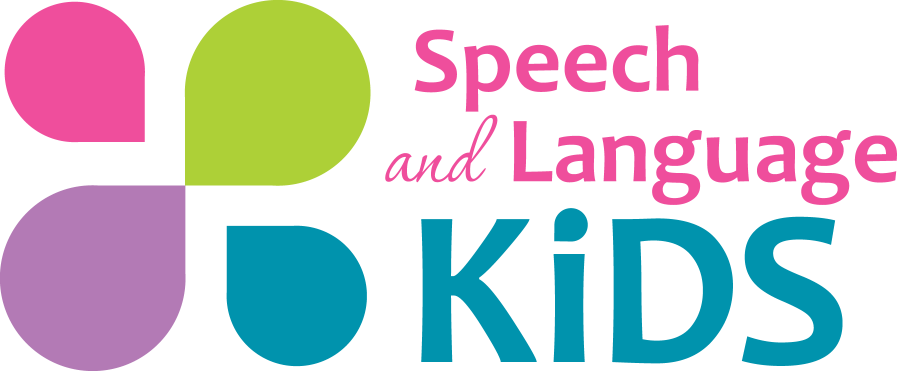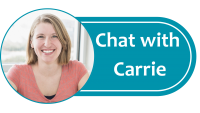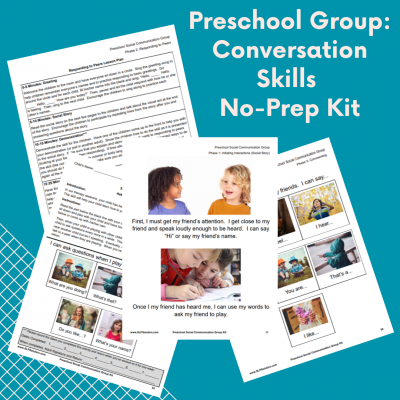
Preschool Social Group Therapy Kit
Preschool Social Group Kit: Initiating and Maintaining Conversation During Play
(No Prep Kit)
(No Prep Kit)
The development of conversational skills begins through play in preschool. Preschoolers are learning how to initiate and maintain interactions through play with their peers. However, children with social communication impairments don’t always learn these skills simply from watching others. A child who doesn’t know how to initiate interactions with peers may become aggressive or knock down his friend’s block tower instead of asking to play. A child who doesn’t know how to maintain an interaction with a peer may end up playing alone and become isolated. These children can benefit from being explicitly taught how to use words to interact with their peers and from having a lot of practice under the supervision of a speech-language pathologist.
We know that working on social skills in groups can be very beneficial for these children. The interactions with their peers and the ability to practice in natural interactions can be so helpful to our children who struggle with social communication. But it’s not always easy to find time to plan out these group sessions and create the materials needed to run them. That’s where we come in!
Our preschool social group kit will include everything you need to smoothly run a preschool social communication group that focuses on initiating and maintaining interactions during play. You bring the children and a few toys and we’ll bring everything else!
What’s Included:
- Lesson Plans for the 7 Phases of Therapy
- Sample Goals
- Data Collection Sheets
- 5 Social Stories (initiating interactions, responding to peers, making comments, asking questions, making play suggestions)
- Sample Scripts for How to Demonstrate & Practice Each Phase of this Skill
- Homework Pages for Every Phase
- Resources for Carry-Over & Generalization (Including parent/teacher letters and visual aids)
- Ideas for How to Modify Lessons for Children with Autism or Those who Use AAC
Everything you need to run a social communication group for preschoolers. This 75-page packet covers how to initiate interactions and maintain them during play. Includes lesson plans for how to run you groups, 5 social stories, sample scripts for demonstrations, and homework pages for every phase of therapy (initiating + 4 conversational maintenance phases)
Age Range: This packet is perfect for children aged 3-5 years but could easily be modified for children slightly older or younger
Follow the pages from front to back and you’ll have everything you need to work on the following phases of therapy for running a social skills group with preschoolers who need to work on initiating and maintaining interactions during play:
- Initiating Interactions by Using Words to Get Someone’s Attention and Ask them to Play
- Using words to Respond to Peers when they Talk to You
- Using Words to Make Comments to a Peer During Play
- Using words to Ask a Peer Questions During Play
- Using Words to Make Play Suggestions to a Peer During Play
- Putting it All Together by Initiating Interactions and then Using the Above Strategies to Maintain the Interaction for at least 10 minutes
- Carry-Over and Generalization of Conversational Skills to the Classroom and Home
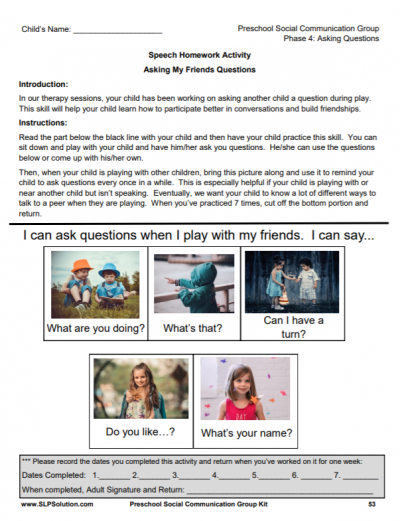
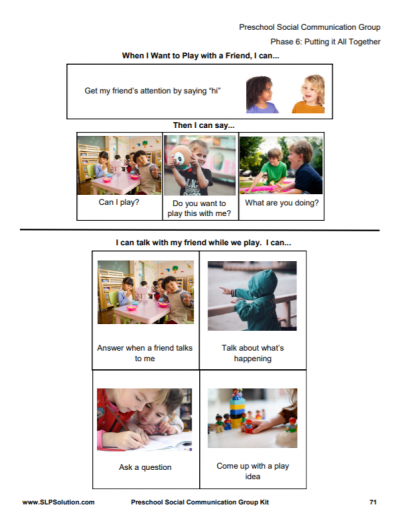
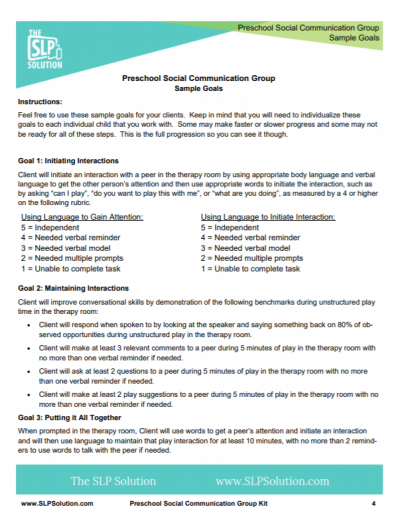
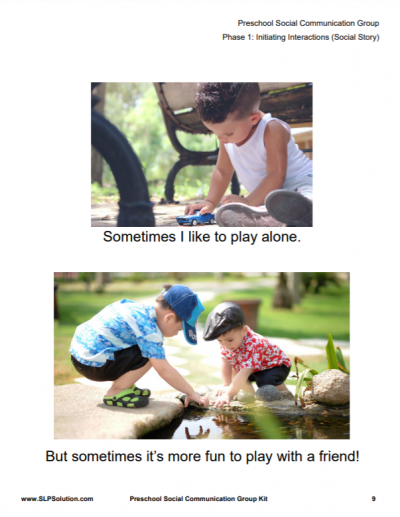
Sample Goals and Data Collection Pages
Sample goals for appropriately initiating interactions as well as for practicing four different conversational maintenance strategies. One additional goal for being able to use those strategies to initiate and maintain a 10-minute interaction.
One data sheet for each phase of therapy that allows you to collect data on multiple children at a time using a rubric-style data collection.

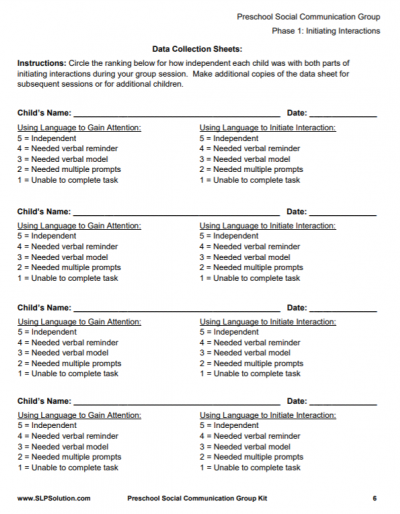
Lesson Plans and Social Stories for Every Phase
Lesson plans and instructions for each phase of therapy that break down exactly how your 30-minute session will go. Each session is broken down into:
- Welcome Song
- Social Story (about that day’s topic)
- Demonstration (from the speech-language pathologist, script included)
- Practice (Structured and Unstructured Practice Scenarios, script included)
- Carry-Over and Copies (Walk to the copy machine while practicing the skill outside the therapy room)
Each skill in this packet comes with a complete social story that you can open up and use in your lesson right away. Each story ends with a one-page visual summary that can be used as a visual aid during the rest of the session. The five social stories focus on the following:
- Initiating Interactions with Peers
- Responding to Peers when they Speak to You
- Making Comments to a Peer During Play
- Asking Questions to a Peer During Play
- Making Play Suggestions to a Peer
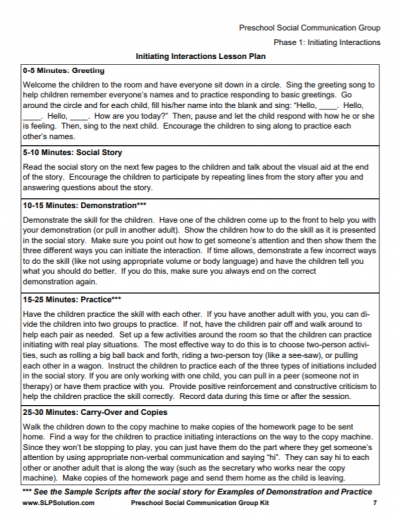

Easy for Parents to Follow (Homework Pages)
Each phase has a homework page that you can copy and send home with your client. The homework pages explain what you’ve been working on and explain how the parents can practice at home. It also includes a copy of the visual aid so the parents can practice using the same pictures.

Resources for Carry-Over and Generalization



